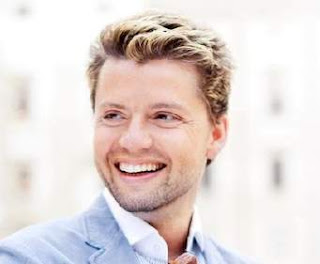ISO's Mendelssohn and Mussorgsky/Ravel: What's wrong with a warhorse (if it's still got noble fighting spirit left in it)?
Most frequently played works for orchestra justify that frequency by dint of a number of durable qualities. The Indianapolis Symphony Orchestra opened its Classical Series Friday night with three of them.
Krzysztof Urbanski, music director of the ISO in his next-to-last season, has shown insights into oft-heard pieces many times in his nine-year tenure. I remember how much Samuel Barber's Adagio for Strings benefited from his conscientiousness many seasons ago.
 |
| ISO guest soloist Julian Rachlin also has extensive experience on the podium. |
It showed up again in what he managed to do at Hilbert Circle Theatre with Modest Mussorgsky's "Pictures at an
Exhibition" in the familiar orchestration by Maurice Ravel. It animated his suave presentation, sporting some excellent solos, of Jacques Offenbach's Overture to "Orpheus in the Underworld." And it took place as a result of a superb meeting of the minds with soloist Julian Rachlin in Felix Mendelssohn's Violin Concerto in E minor.
The Lithuanian-born Rachlin took a serious, reflective approach to the Mendelssohn concerto. The violin enters after a few seconds of orchestral murmur, and usually the upward-reaching theme is introduced with buoyant assertion. Many performers have accustomed us to regarding the work, despite its being embedded in the minor mode, as music declaring its source in the composer of the "Midsummer Night's Dream" music.
But Rachlin found the buoyancy under the guardianship of an earnestness that Mendelssohn was often capable of, but chiefly in his oratorios, "Elijah" and "Paulus," and his "Reformation" Symphony. His understated opening still had gravitas, a mood that was seconded by the orchestra in the first big tutti. The second theme, tenderly introduced by woodwinds, found the serious demeanor of the composition undisturbed.
Of the cadenza Rachlin made something like an operatic scena, in which the heroine expresses a range of emotion pertinent to her dramatic plight. It was a quite deliberate interpretation, with a carefully controlled acceleration leading into the re-introduction of the orchestra. There was a sturdy spine behind Rachlin's playing, such that the smoothly linked phrases in the second movement remained firmly focused. His interpretation amounted to a psychological whole, seconded by the orchestra. In the finale, Rachlin's staccato playing was exemplary, and the interplay of violin and orchestra mastered great swells and dips in the texture.
For an encore, he switched gears from the straightforwardness of Mendelssohn to one of the unaccompanied sonatas of Eugene Ysaye, a composer with a knottier way of proceeding. Again, the performance was well-knit from first to last. It struck me as the maturest of interpretations of a work that has been heard many times in the International Violin Competition of Indianapolis.
As a curtain-raiser, Urbanski led the orchestra in a core light classic, Jacques Offenbach's Overture to "Orpheus in the Underworld." The many-splendored episodes leading up to the famous can-can were radiant in all respects. A series of brief solos — clarinet, oboe and cello — were surmounted by an ardent cadenza and aria performed by this week's guest concertmastesr, Kevin Lin. The familiar fast music sped by with panache.
After intermission came a piece that probably would have remained relatively obscure if not for Maurice Ravel's genius for orchestration. Modest Mussorgsky's "Pictures at an Exhibition" is still offered to the public in solo piano recitals. But it's an eccentric landmark of pictorialism that doesn't suit the esthetic priorities of many concert artists. It lives for the appreciation of the larger symphony-orchestra public.
The first statement of the Promenade, which represents the exhibition visitor passing from one picture to the next, sounded thoroughly inviting as first trumpet Conrad Jones played it. On each reappearance, the Promenade set the scene for transition well, except for the iteration between "Gnome" and "The Old Castle," where there was puzzling unsteadiness in the horn statement.
"The Old Castle" settled things down, thanks in large part to the nostalgic mastery evident in Mark Ortwein's alto saxophone solo. Urbanski placed Ortwein in one of the side boxes, which made the saxophone solo conspicuous in all respects. Much later, Urbanski suggested the wide expanse of a civic celebration by placing two sets of tubular bells remotely for "The Great Gate of Kiev," where they contributed extra majesty and clangor to the suite's finale. Clearly devoted to taking advantage of having well-known music at his fingertips, Urbanski did his utmost to draw from the orchestra an impression of Russian grandeur and the readiness of well-known music to confirm its place in people's hearts.



Comments
Post a Comment